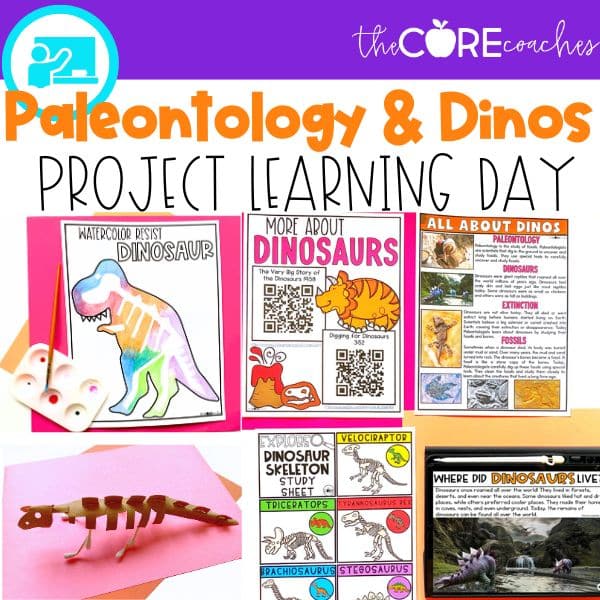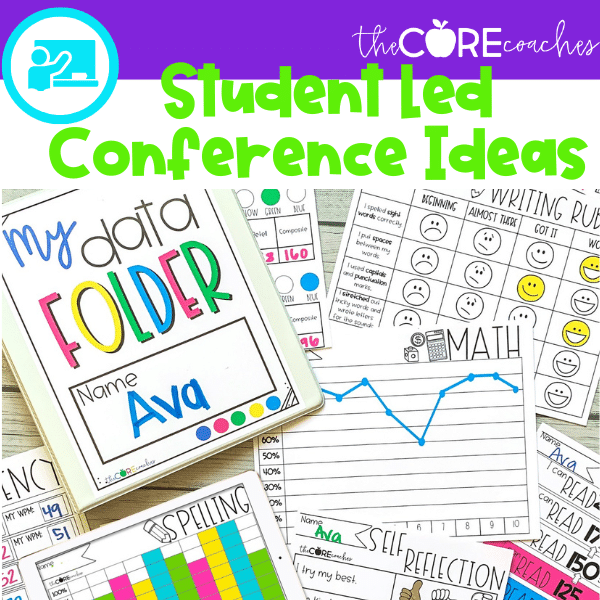Text Dependent Questions for Elementary Grades
If there is a literacy topic I feel passionate about, it’s text dependency. I became a teacher in the era of “text to self” connections. In my early teaching years, I was a pro at teaching kids to make personal connections to read-alouds and other texts. I didn’t realize until years later how important it was to require students to dive into the text to ensure they truly comprehend it.
What are Text Dependent Questions?
Simply said, text dependent questions are those which can only be answered using evidence from the text. These types of questions are critical in a close reading lesson because they require students to read and reread the text in order to answer the question successfully.
In addition, text dependent questions are also a great way to provide opportunities for students to discuss their thinking with others and work on their speaking and listening skills to meet the core standards.
Why Do I Ask Text Dependent Questions?
Text depending questions help teachers identify that students have a common, deep understanding of the story or content. To do so, the teacher will asks students questions that are specific to the text (instead of personal connection). The goal for the teacher is to identify that a common understanding of the text.
In addition, text dependent questions are a great way to provide opportunities for students to discuss their thinking with others and work on their speaking and listening skills to meet the core standards.
Text Dependent Questions and Elementary Students
In primary grades, it is common for students to want to share personal connections to the text. Every primary teacher has experienced a read-aloud where one child waves their hand furiously to tell a story about his dog- only to have five more children raise their hands to tell about their dogs. While this is par for the course in primary grades, and quite adorable, the more time we spend with students talking about personal experiences, the less time we spend helping students see how to make meaning of the text.
The importance of students answering questions specific to text
Text-to-self connections are valuable, however, in the initial steps of a close reading lesson, it is critical to ask questions that focus solely on the text. After students have answered questions about the text, they have a common, deeper understanding of the story or content. At this point, the discussion involving students‘ personal connections becomes much more meaningful for all members of the class. You may consider using the following days, morning meeting to allow for students to share their personal experiences related to the previous days’ closed reading session
------New and Noteworthy------
Examples of Text Dependent Questions
For example, if the class was reading about community helpers, and several students wanted to discuss their experiences with the vet, the teacher would ask students to wait until later in the lesson to share their personal connections. The teacher would first ask several questions about the text so that all students had equal access to information about veterinarians. Once all students have this common understanding, students are invited to share their personal experiences. At this point student’s insights are an added value to the learning.
Once all students have this common understanding, students are invited to share their personal experiences. At this point student’s insights are an added value to the learning.
Help Students Find Evidence from the Text
Many schools and districts require teachers to use scripted reading programs that contain comprehension questions. Unfortunately, some of these questions do not require students to have read the text in order to be answered. Don’t throw your teacher manual away! Many of these questions can be tweaked into text dependent questions with little effort.
How do I write text dependent questions?
I refer to the Common Core ELA Literature and Informational Text standards and use question stems that target standards from each section (Key Ideas and Details, Craft and Structure, and Integration of Knowledge and Ideas). For helpful text dependent question stems that can be used for any text, I have created a resource that will help you ask questions and facilitate discussions that encourage higher order thinking while covering ALL of the informational and literature standards.
How Text Dependent Questions Transformed my Teaching
When I used to read-aloud to my students I would read the entire story one time and ask all the comprehension questions in one sitting. I didn’t prepare questions ahead of time so I asked basic story element questions i.e.: who are the characters, what is the setting, problem, etc.. When I came to tricky vocabulary words, we would discuss the meaning. When I felt my kids were confused, I threw in some inference questions. I want my kids to enjoy the story without many disruptions or stopping points.
What I’ve learned about Text Dependent Questions
I didn’t realize, until years later, when I studied close reading, that there was a better plan of attack. Based on some research by Timothy Shanahan, Doug Fisher, and Nancy Frey, I started planning my read-aloud lessons around 3-4 sessions, which I now call “Close Looks.” The first day, I read the story or text aloud simply for pleasure. I want my kids to enjoy the story without many disruptions or stopping points. The second lesson is our first “Close Look.” We read the story again, in entirety, and I stop to ask basic “Key Ideas and Details” questions. I write these questions based on the KEY IDEAS AND DETAILS Reading Literature or Informational Text Common Core Standards.
Key Ideas and Details Examples for Second Grade:
The Third lesson, or “Close Look,” I revisit portions of the text with the students. I ask questions about the craft and structure of the text. I derive these questions from the CRAFT AND STRUCTURE Common Core Standards. We revisit pages to discuss vocabulary words, text features, and text structure. This day is probably my kids’ favorite. They love to analyze why the author made certain word choices and the reasons the words are written in fun ways.
Craft and Structure Examples for Second Grade:
During the final lesson or “Close Look,” we dive deeper into the text. I base these text dependent questions on the INTEGRATION OF KNOWLEDGE AND IDEAS standards. This day is built-in to spend time studying illustrations or text features. We also revisit parts of the story to discuss tricky parts that require inference. If we have read another related text, we make text-to-text connections.
Knowledge and ideas Examples for Second Grade:
As mentioned, text dependent questions are also a great way to provide opportunities for students to discuss their thinking with others and work on speaking and listening skills to meet the core standards. Learn how I explicitly teach my students speaking and listening responsibilities in my Discussion Strategies and Accountable Talk in the Classroom post.
Conclusion
By spending three to five days closely reading a book, my kids become experts. By the time I ask text dependent questions over the span of lessons, I have covered all Common Core Literature or Informational Standards. But, the best part is my kids fall in love with every book we close read. They talk about the plot and characters at home and on the playground. This just wasn’t the case when I only read the book with them once. During independent reading, they fight over Stick and Stone, Turkey Trouble, Creepy Carrots just to name a few. For Valentines Day, the kids choose their favorite read-aloud and decorate their boxes to represent it. I promise, once you try a read-aloud this way, you will NEVER go back to your old ways. We have done all the work for you if you want an entire read-aloud curriculum.
Read next: Back to School Paired Text

We'd like to send you a free interactive read-aloud that is easy to use in either a print or digital format!
Success! Now check your email to access your free interactive read-aloud.





